The Gailes made a big splash when it opened, being named Golf Digest’s Best New Resort Course and finding for many years thereafter a high place on its top 100 public courses and top 25 overall in the state of Michigan. This is probably because when it opened back in the mid-90s, it must have been one of the most original new courses in the country—a pseudo-links course that actually looked like a real one, with wide, rippling fairways and hidden sod-faced bunkers. Many courses built in the 80s and 90s labelled themselves ‘links-like,’ but this usually just meant lines of mounds down the sides of the fairways and otherwise-standard shaping. The Gailes was one of the only courses that really made an effort to practice what it preached and was rewarded with many years of high rankings by all the golf magazines.
As with many courses built in the 90s that made a big splash on the lists, the Gailes has really fallen off in the last decade or so. It no longer makes any top 100 public lists and didn’t even make Golfweek’s recent (2020) list of the top 20 public courses in Michigan. I was very surprised to see this and it inspired me to revisit the Gailes.
I had only played the Gailes once before, in either 2004 or 2005. Back then, it was still on all the lists so I had very high expectations. I remember being a bit disappointed but also not being quite sure what to make of the course. Although I noted above that unlike the other 90s faux-links courses, the shaping extends into the fairways, I thought at the time that there was still too much mounding along the fairways relative to what was on them. And I thought that they overdid it with the pot bunkers, which were scattered seemingly everywhere. I also didn’t like their construction—they were very shallow and looked kind of cheap rather than authentic because the areas around them weren’t shaped to make the look like natural depression, which is what bunkers on links courses are. But I also thought that the greens were excellent and there were some very good holes, so I needed another look—which also gave me the opportunity to take pictures so that I could write this review.
Although I hadn’t remembered the details of some of the holes, my feelings about the course were very similar to what I had remembered having the first time. It’s a very good course, but I think that they could have done a better job with what they were trying to do. I felt that it was probably a bit overrated then but now that it has fallen off all of the lists, I feel like it’s underrated. I thought before that it was one of the top 20 public courses in the state, but closer to number 20 than number 1. I still feel the same way. And another thing that I’m now more aware of is that with its bent grass fairways, it doesn’t play like a links. We now have an example of true links fairways with the all fescue fairways at the Loop and the Gailes would benefit greatly if it had them. But I still appreciate that the course was original for its time, which should still count in its favor.
The first hole is a good start with a solitary bunker in the right side of the fairway that will catch a weak drive. Otherwise it’s a straight-forward hole with a nice, open green which gives a clearer view to those on the left side of the fairway. The second hole is a medium length par 3 that plays to the undulating right half of a double green.
As with many courses built in the 90s that made a big splash on the lists, the Gailes has really fallen off in the last decade or so. It no longer makes any top 100 public lists and didn’t even make Golfweek’s recent (2020) list of the top 20 public courses in Michigan. I was very surprised to see this and it inspired me to revisit the Gailes.
I had only played the Gailes once before, in either 2004 or 2005. Back then, it was still on all the lists so I had very high expectations. I remember being a bit disappointed but also not being quite sure what to make of the course. Although I noted above that unlike the other 90s faux-links courses, the shaping extends into the fairways, I thought at the time that there was still too much mounding along the fairways relative to what was on them. And I thought that they overdid it with the pot bunkers, which were scattered seemingly everywhere. I also didn’t like their construction—they were very shallow and looked kind of cheap rather than authentic because the areas around them weren’t shaped to make the look like natural depression, which is what bunkers on links courses are. But I also thought that the greens were excellent and there were some very good holes, so I needed another look—which also gave me the opportunity to take pictures so that I could write this review.
Although I hadn’t remembered the details of some of the holes, my feelings about the course were very similar to what I had remembered having the first time. It’s a very good course, but I think that they could have done a better job with what they were trying to do. I felt that it was probably a bit overrated then but now that it has fallen off all of the lists, I feel like it’s underrated. I thought before that it was one of the top 20 public courses in the state, but closer to number 20 than number 1. I still feel the same way. And another thing that I’m now more aware of is that with its bent grass fairways, it doesn’t play like a links. We now have an example of true links fairways with the all fescue fairways at the Loop and the Gailes would benefit greatly if it had them. But I still appreciate that the course was original for its time, which should still count in its favor.
The first hole is a good start with a solitary bunker in the right side of the fairway that will catch a weak drive. Otherwise it’s a straight-forward hole with a nice, open green which gives a clearer view to those on the left side of the fairway. The second hole is a medium length par 3 that plays to the undulating right half of a double green.
The next few holes are very tough. I remember not liking the medium-long par 4 third…and I was right. There are blind fairway bunkers everywhere and a creek cuts off the fairway in the driving zone and again in front of the green. I think there’s enough room if you carry the fairway bunkers up the right side, but it’s an unnerving drive, especially because the hole plays straight into the wind.
After a nice long par 3 to a large undulating green with bunkers along the right to catch weak shots, we come to an even harder par 4, number five. Bunkers pinch the fairway left and right and again, a creek cuts off the driving zone. But I found this hole more playable than I remember because a solid drive will easily carry the fairway bunkers and only the longest hitters can reach the creek. The green is also very receptive to a long approach.
The creek continues up the right side of the sixth fairway, but there is tons of room to miss left. I hit a terrible pull off the tee and was still in the light rough just off the edge of the fairway. And the angle of approach to the green isn’t that important because it’s completely open in front.
I like the tee box on the par 5 seventh, which is just a simple extension of the sixth green. We see this all the time now, but it was little features like this that made the course original for its time and gave it a reasonable claim to being a links course. This is a nice-looking hole, but there isn’t a lot of interest between the tee and the green.
The same is true for the very long par 5 eighth, which has little invisible bunkers scattered everywhere down the right side, but is is pretty straight-forward if you keep it down the left. To be honest, it isn’t even worth thinking about most of these fairway bunkers because they’re so small that they’re almost impossible to hit—like hitting a small puddle in the middle of the fairway. A good general rule on this course is to ignore individual fairway bunkers on any shot, but plan around bunker clusters. The green on eight is very good—small, elevated, and undulating.
The green on the very short par 4 ninth is also small and elevated with a false front in the front right. The fairway is enormous, but you’ll want to keep it up the right side to have an open shot up the slope.
The tenth is probably my favorite hole on the course for a simple reason—it’s the one hole where the mounds around the fairway are continuous into the hole, rather than just on the edges. This hole really feels like you’re on an actual links course rather than a solid imitation of a links course. The left side of the fairway is obscured by mounds on the left side and there are two blind bunkers here—it’s best to play over the right edge of the mounds that encroach from the left side, at the left edge of the part of the fairway that you can see. The second shot is over mounds that obscure a view of the punchbowl green from anywhere but left-center. If there were seven or eight holes with shaping like this one, the course would be quite impressive.
The par 5 eleventh returns to the standard mounding down the side, but it’s a very interesting hole. If you drive it down the shorter left side, your view of the lay-up area and green will be blocked by long grass-covered mounds in the left side of the fairway. You’ll either have to carry these to go at the green or lay-up to the right, being careful not to run through the fairway. Visually, it’s much simpler to play down the center-right.
The twelfth is the Gailes’s take on the postage stamp—140 yards to a small plateau green with a mound on the left and pot bunkers right and long. It’s a tough hole, but recoveries are doable if you don’t miss by too much—there isn’t a real danger of going back-and-forth here.
The thirteenth was probably the first 500 yard par 4 in Michigan and is just brutal. A creek cuts off the fairway about 175 yards short of the green, which is nestled into hillocks and has pot bunkers front left and front right. It’s pretty hard to run the ball onto the green given the soft fairways and narrow opening in front, so it’s probably best just to play for the front center of the green. The pitch from here is simple.
While not as long as the thirteenth, the par 4 fourteenth may be just as hard. While the fairway is wide, anything up the right side will be blocked by mounds that pinch the fairway about 250 yards off the tee and run up its right side. This is one of the hardest greens on the course to hit. It’s the right half of a plateau double green with number eleven and anything short, right, or long will run off. A run-up up the left side is blocked by a proper cavernous pot bunker behind the eleventh green and a small one front left of the fourteenth. It's a good hole, but very tough.
The fifteenth is par 5 with several blind bunkers in the left side of the driving zone. While it’s true that links courses have blind pot bunkers, in my experience (which is links courses in England and Wales), they’re more often visible than blind. The opposite is the case at the Gales—most of the bunkers are blind. This is another issue that I think would have been helped by more shaping in the fairways. More shaping in the fairways would have allowed them to create visible mounds and depressions and the latter would have been natural places for bunkers. Even if the bunkers themselves weren’t visible, the mounds would clue you in that there might be something there. As is, it’s very hard to play the Gailes without some kind of how schematic because on many of the holes, there’s often no indication where the trouble is.
To be honest, the final few holes are pretty uninteresting. The sixteenth is a bland par 3 with a large green. The seventeenth is a bit better; the fairway is pinched by clusters of pot bunkers left and right at about 250 and the approach—to the right side of a double green with number two—opens up from the right.
The eighteenth is flat and wide open as long as you don’t hit a long drive up the left, where many bunkers await. Keeping with architect Kevin Aldridge’s fetish for building an enormous green on the eighteenth hole of every course he designs (a nod to the eighteenth green on the Old Course at Indianwood, which his family owns), this green is about the size of five or six normal greens put together. There’s some contour, but not enough for such a large green and this is a pretty dull way to finish an otherwise interesting, if flawed, golf course.
I was a bit disappointed by the Gailes fifteen years ago but came to think in the meantime that it was probably a better course than I thought. Playing it again, my first sense was correct and now it’s more clear to me why. It is a more authentic take on a links than anything from around that time, but there are several little problems and missed opportunities with the design. The amount of shaping between the holes relative to in the fairways is the biggest problem. And more shaping in the fairway would have helped with a second big problem, which is the blindness of such a high percentage of the fairway bunkers. A few of the holes are a bit too severe and running the ball onto the greens is difficult due mostly to the fairway grass, but also because there are too many bunkers in front (on thirteen, for example).
These complaints aside, the shaping of the greens is excellent, the course has pretty good flow, and there are several very good holes. The greens have great variation in both their size and interior contour. It’s certainly one of the better sets of green complexes on any public course in the state. The course’s flow is also good; some holes are very difficult, but there are stretches of easier holes to offset them. And there are several very good holes, especially in the middle of the course. I think that one of the architects currently in vogue (like Gil Hanse or Tom Doak) could have done a better job with the concept; for example, although it’s been awhile, I thought that Doak’s course at the Legends in Myrtle Beach, also from the early 90s, was a better faux links. But this is a very good course and it was novel for its time, so I think that we should still give it a lot of credit. And it should still be on lists of Michigan’s best public courses.
These complaints aside, the shaping of the greens is excellent, the course has pretty good flow, and there are several very good holes. The greens have great variation in both their size and interior contour. It’s certainly one of the better sets of green complexes on any public course in the state. The course’s flow is also good; some holes are very difficult, but there are stretches of easier holes to offset them. And there are several very good holes, especially in the middle of the course. I think that one of the architects currently in vogue (like Gil Hanse or Tom Doak) could have done a better job with the concept; for example, although it’s been awhile, I thought that Doak’s course at the Legends in Myrtle Beach, also from the early 90s, was a better faux links. But this is a very good course and it was novel for its time, so I think that we should still give it a lot of credit. And it should still be on lists of Michigan’s best public courses.
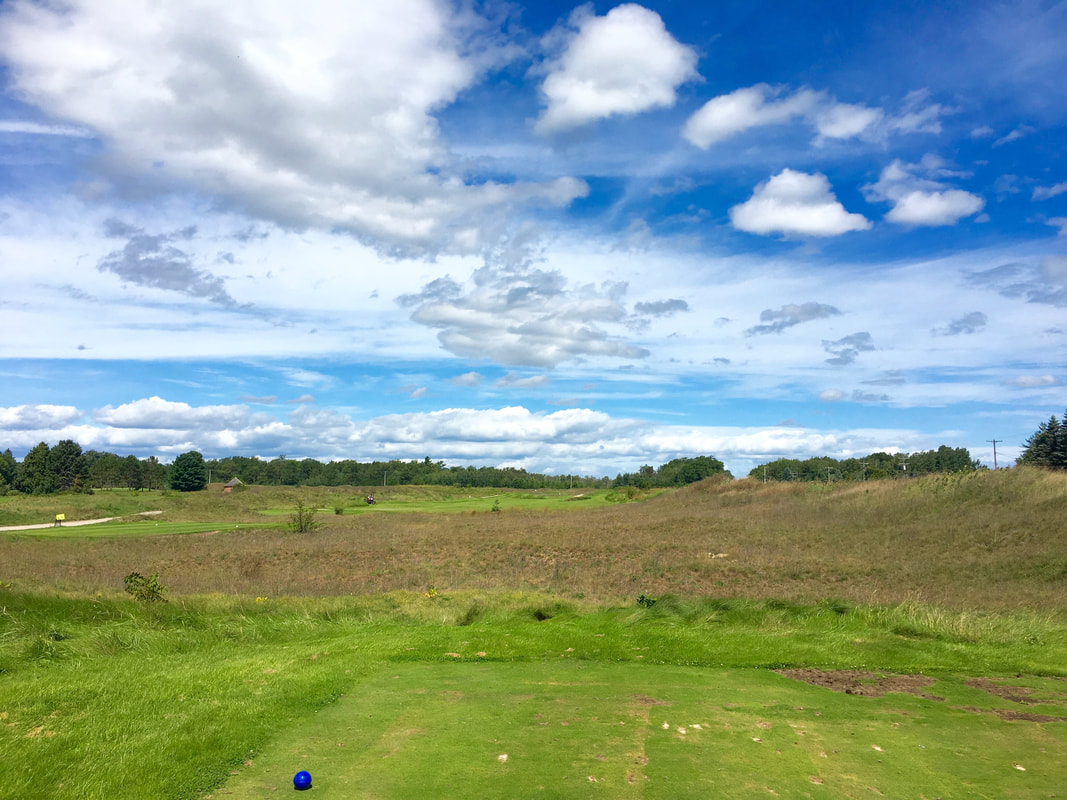
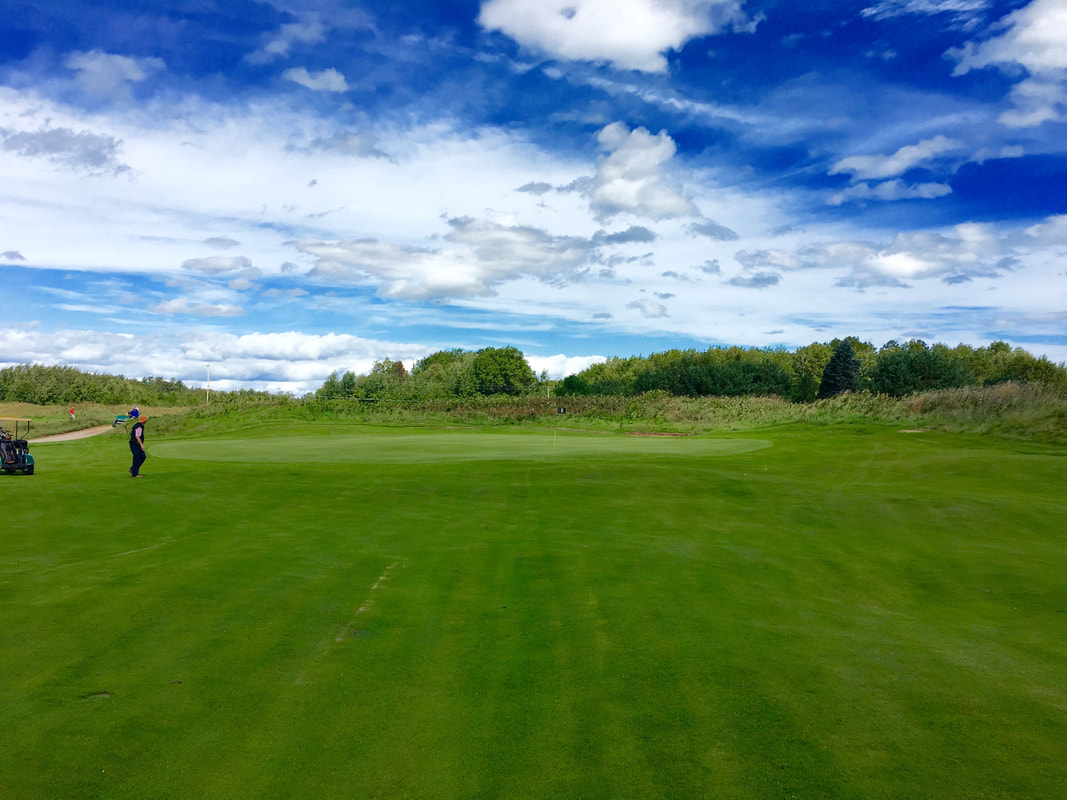
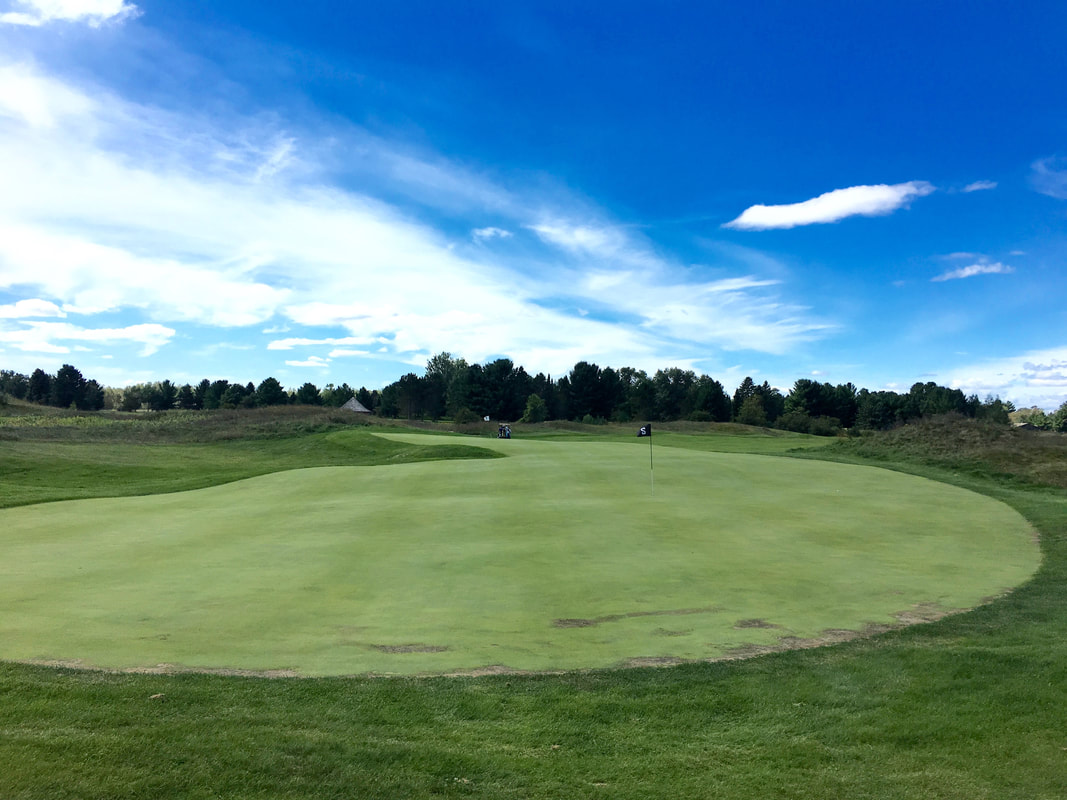
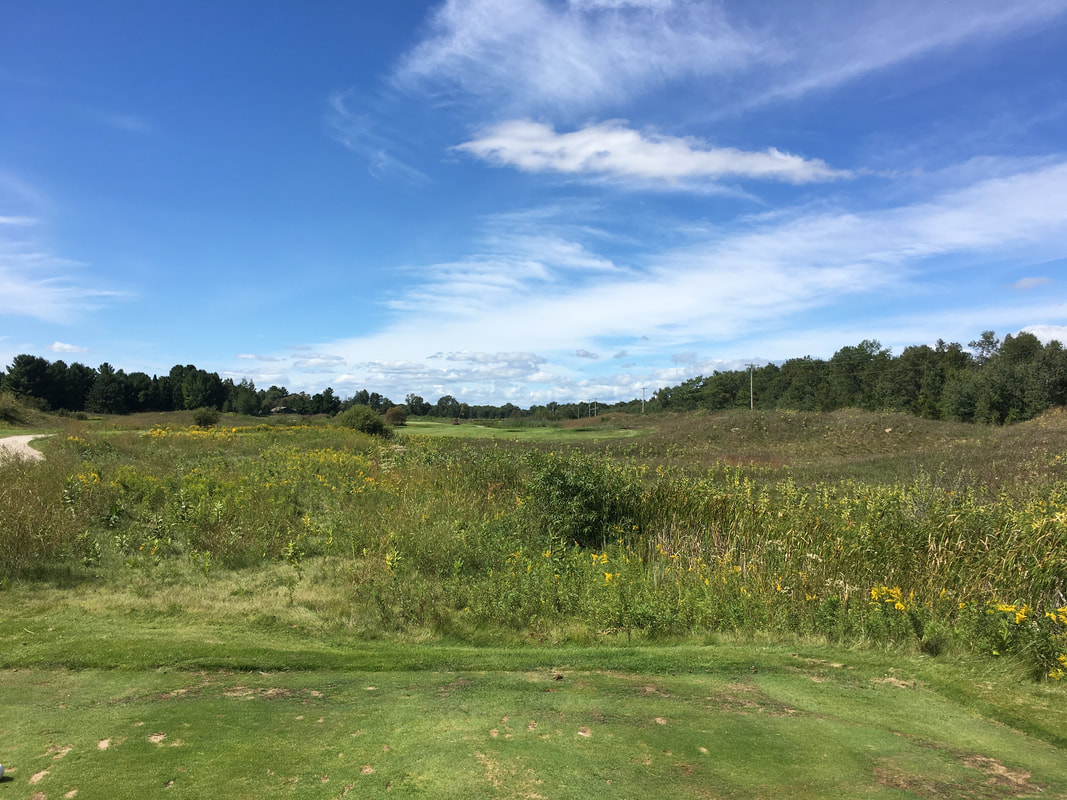
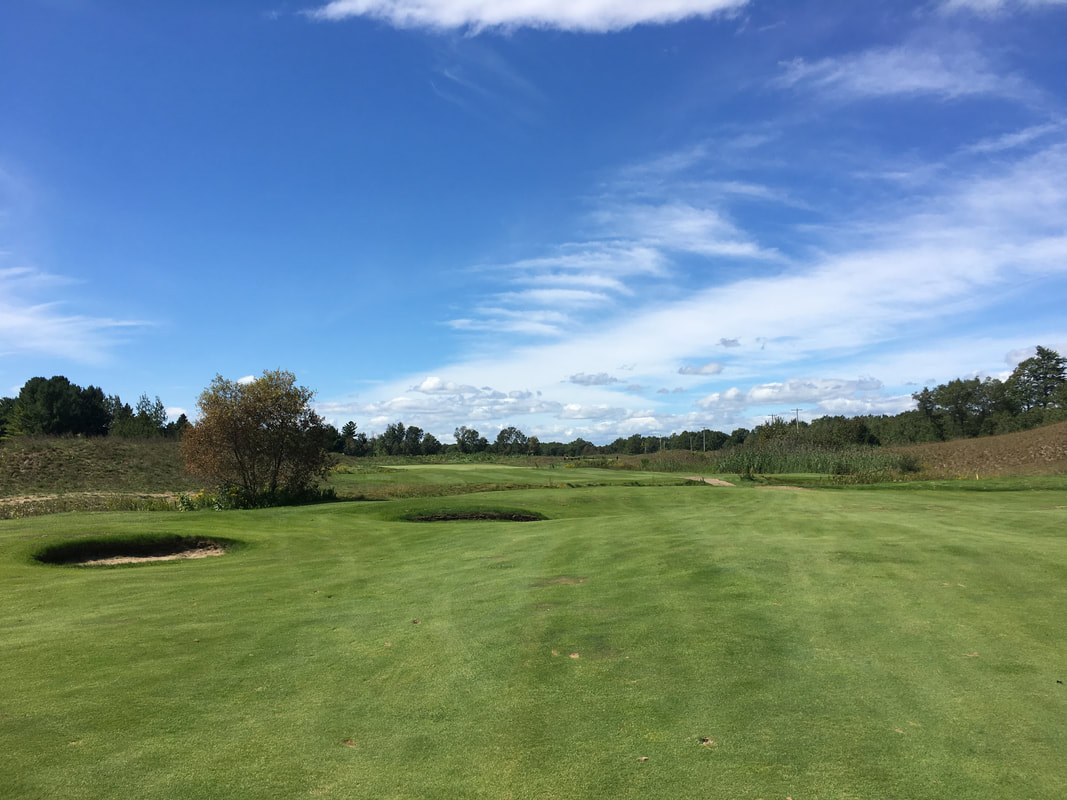

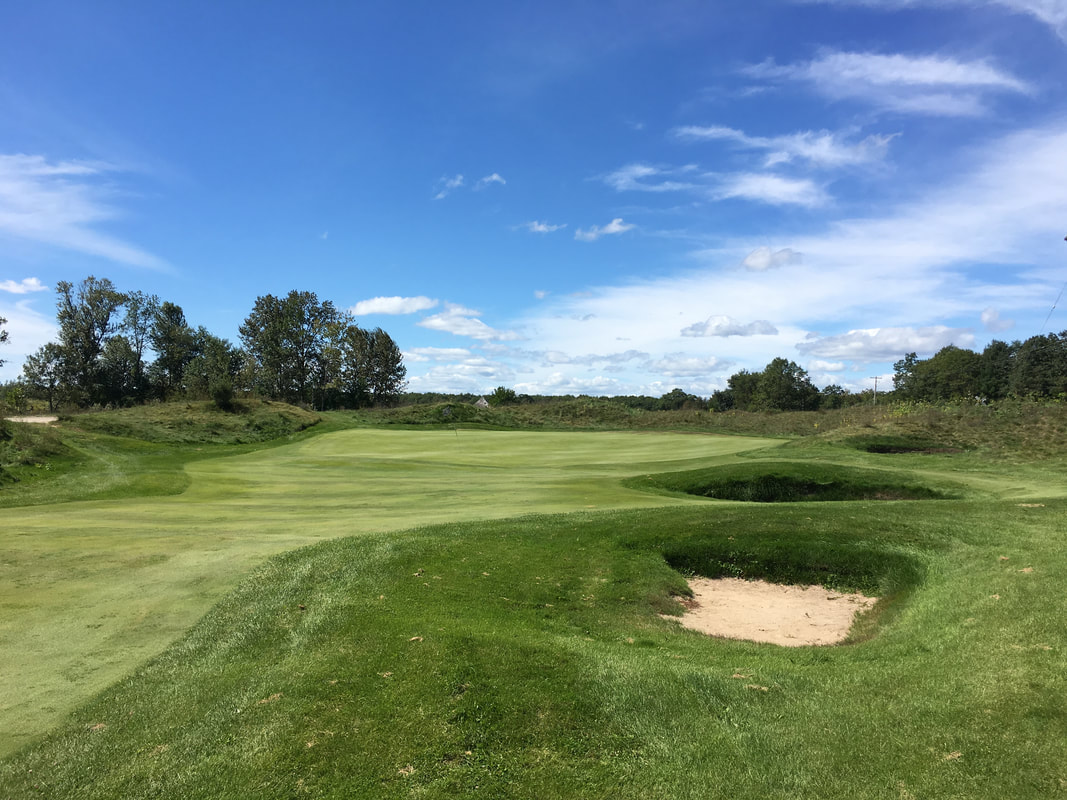
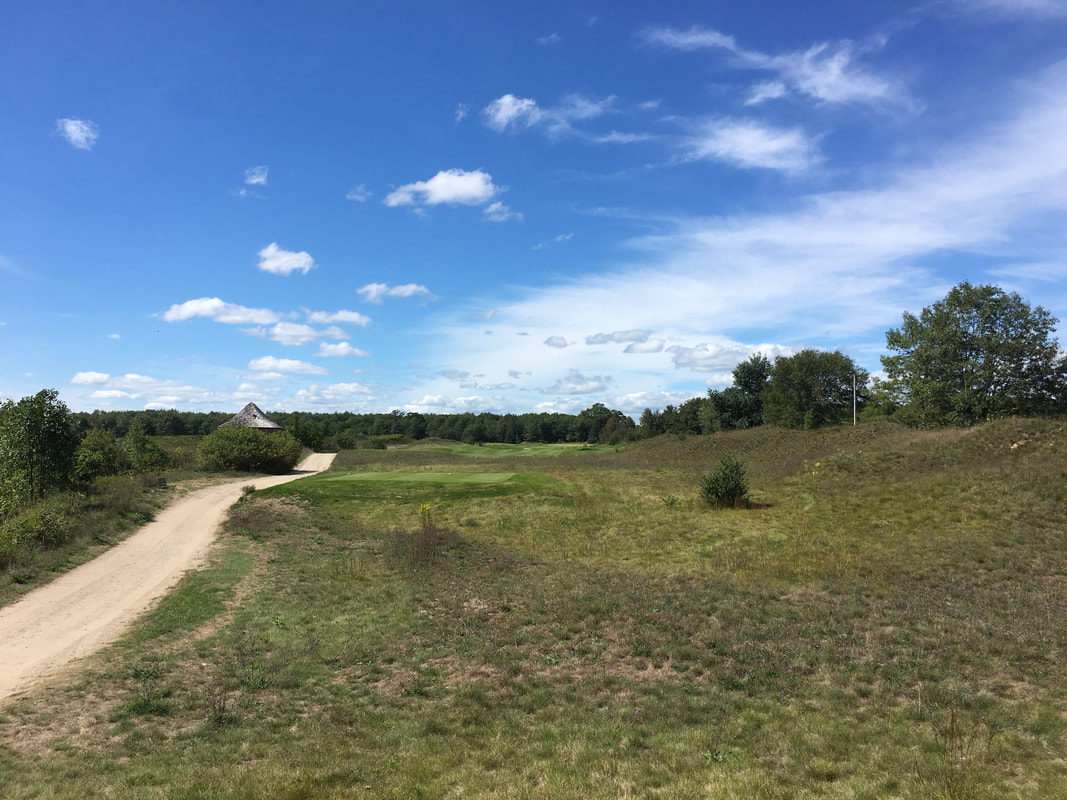
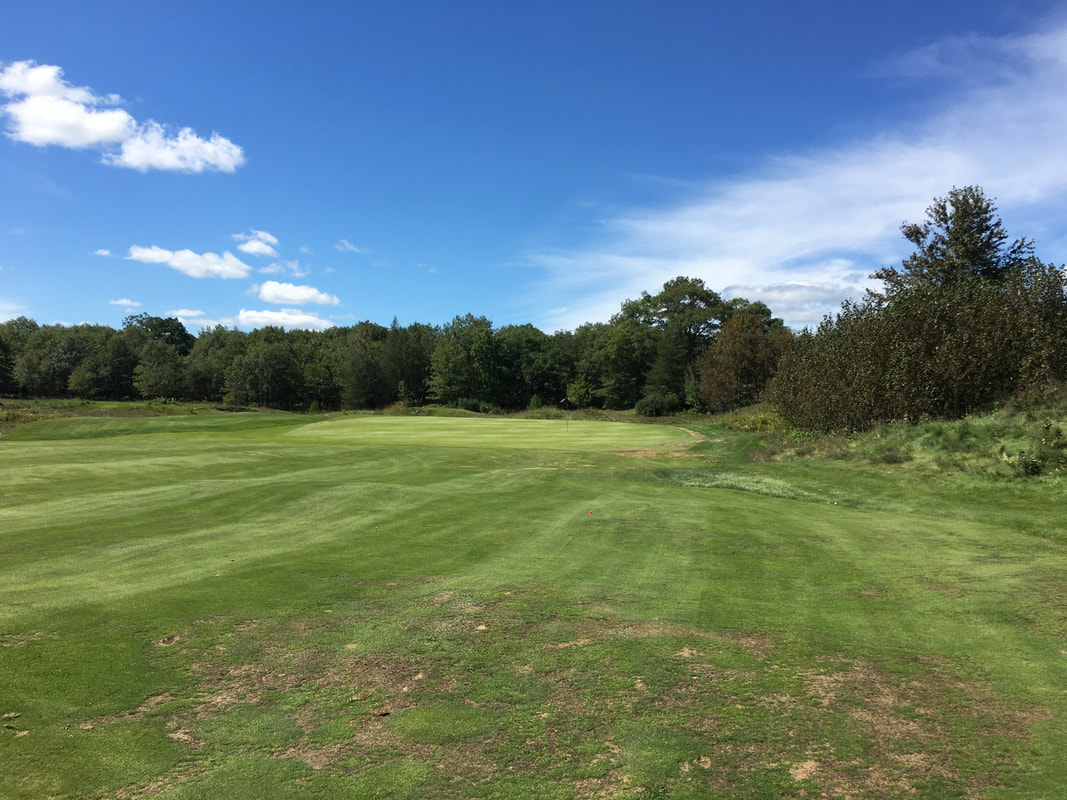
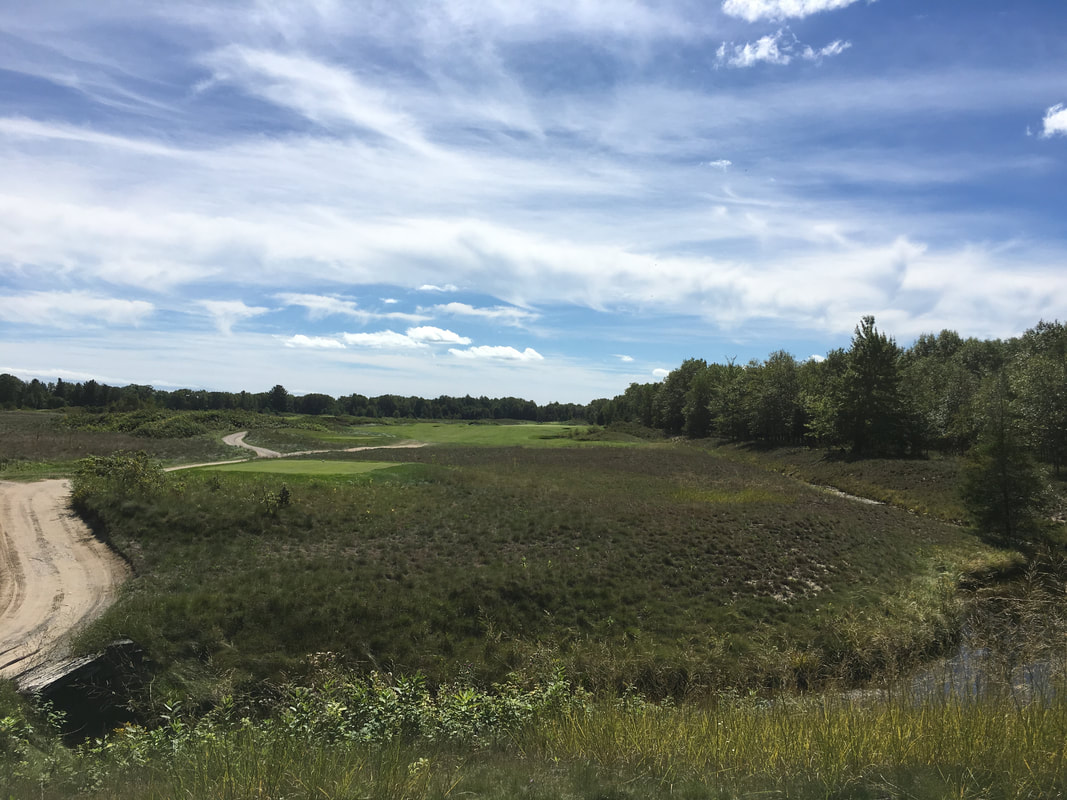
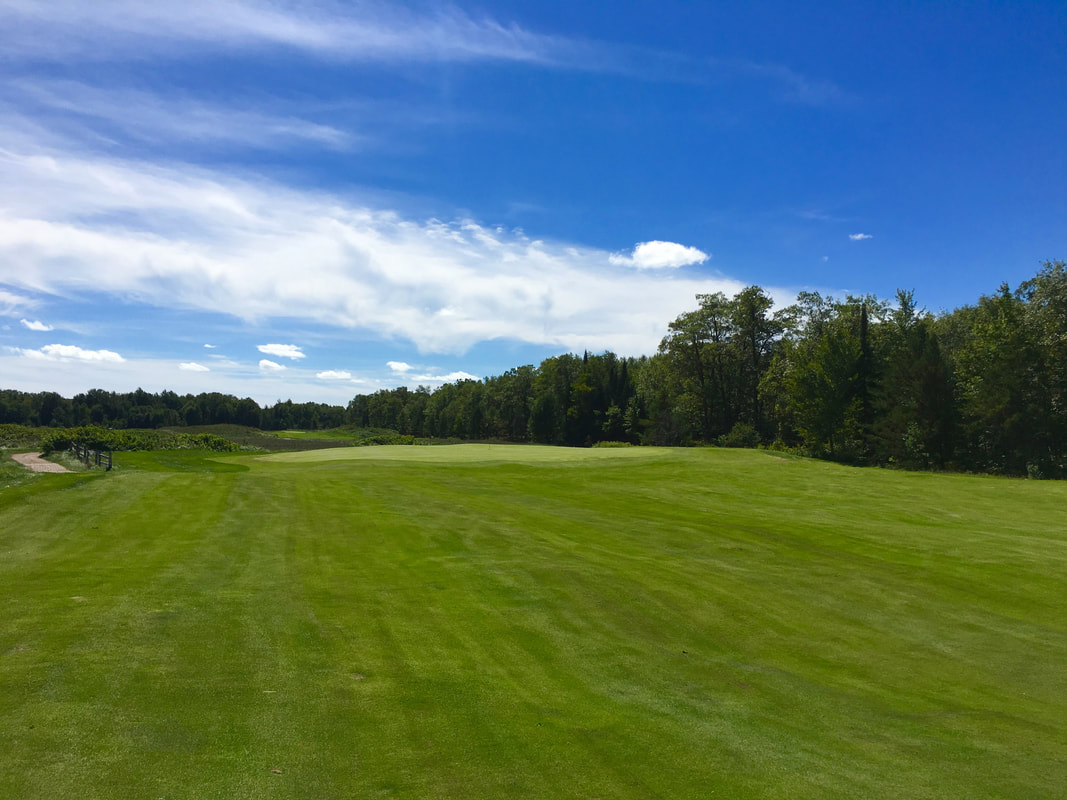
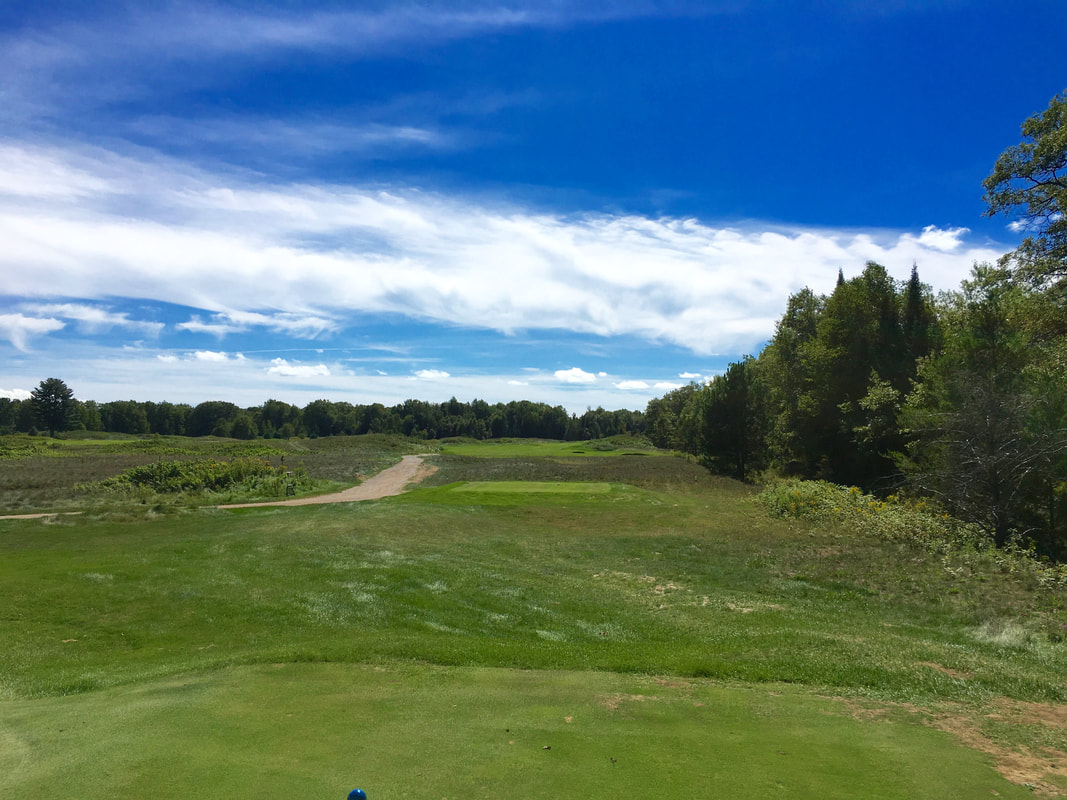
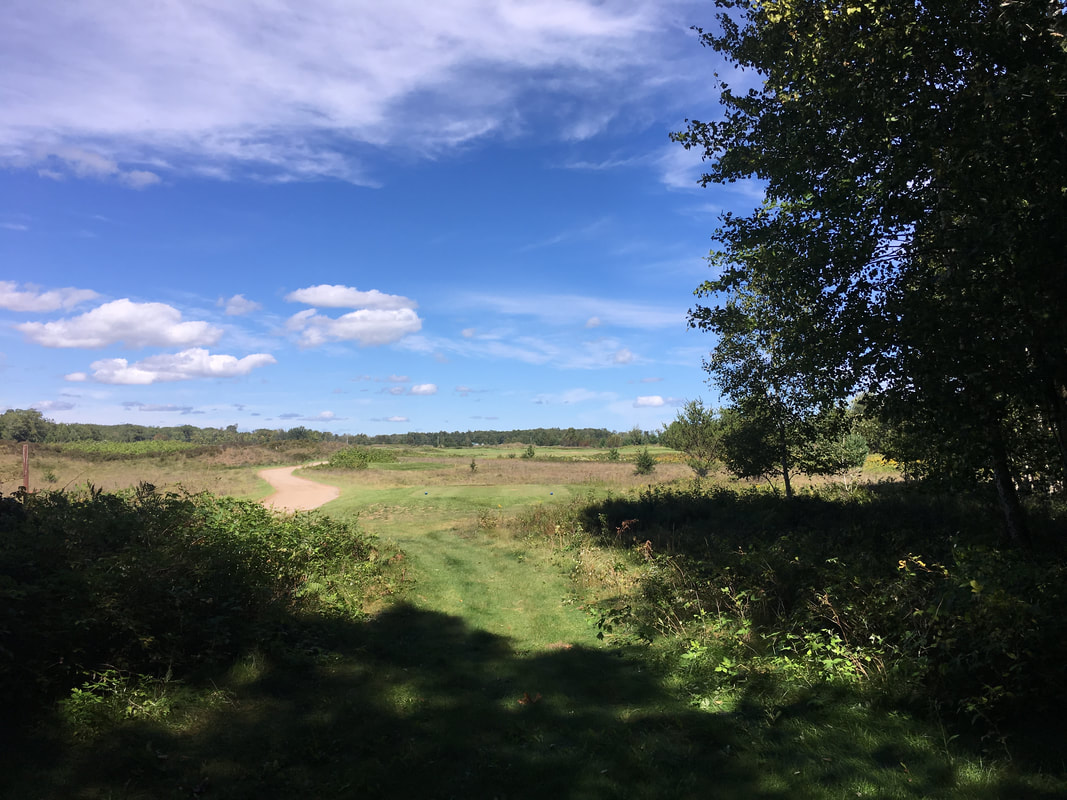
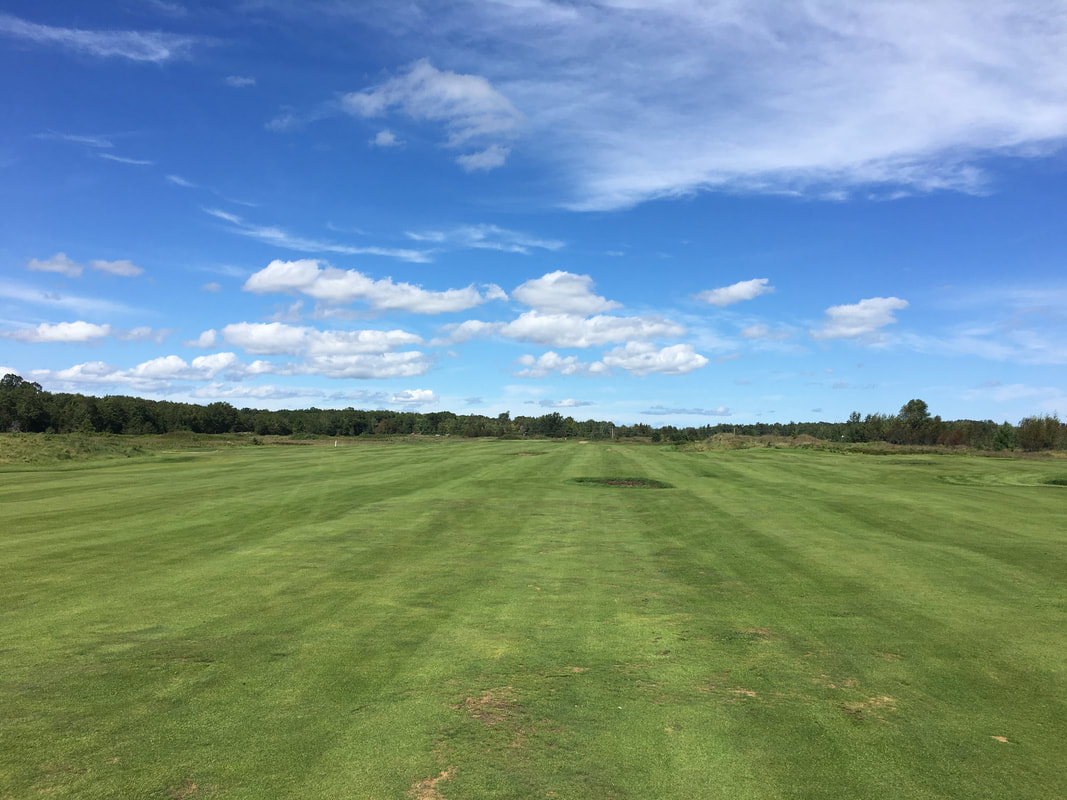
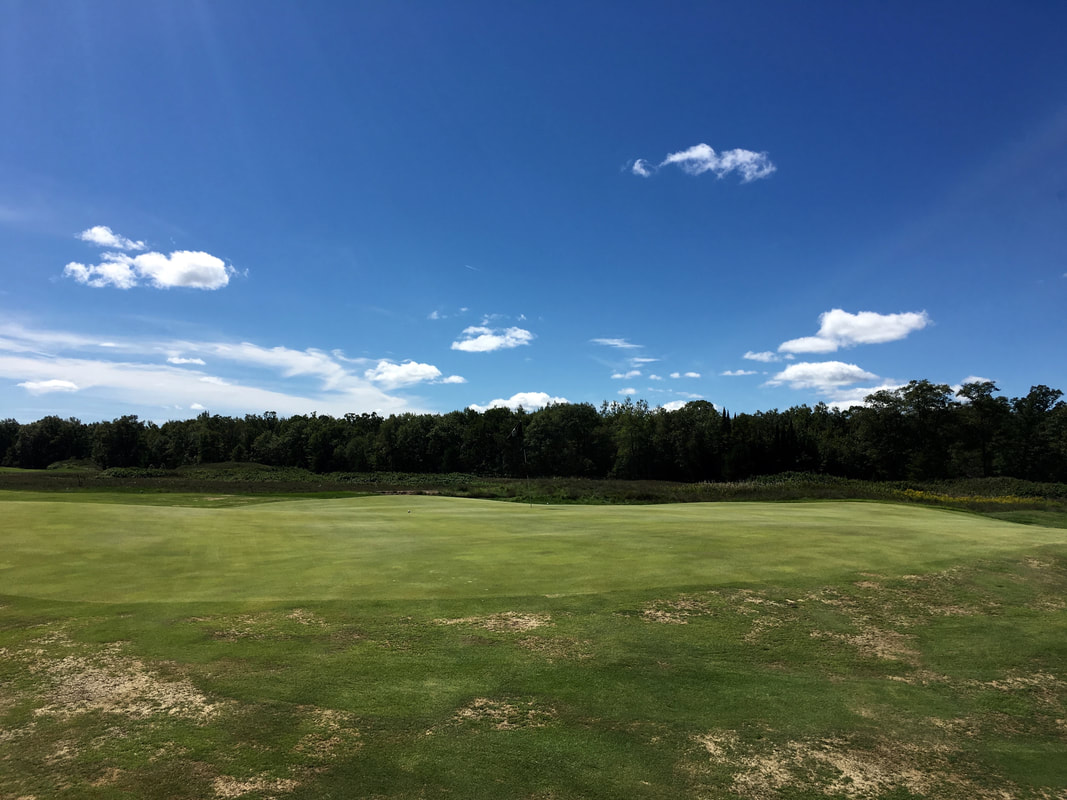
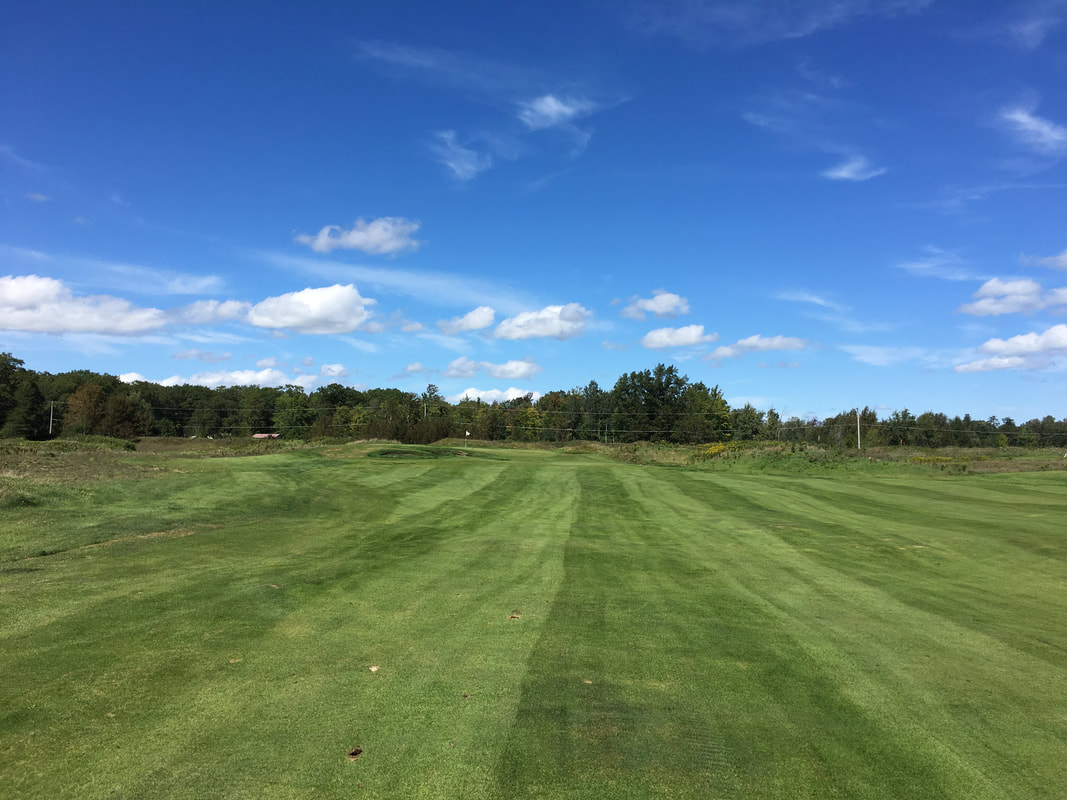
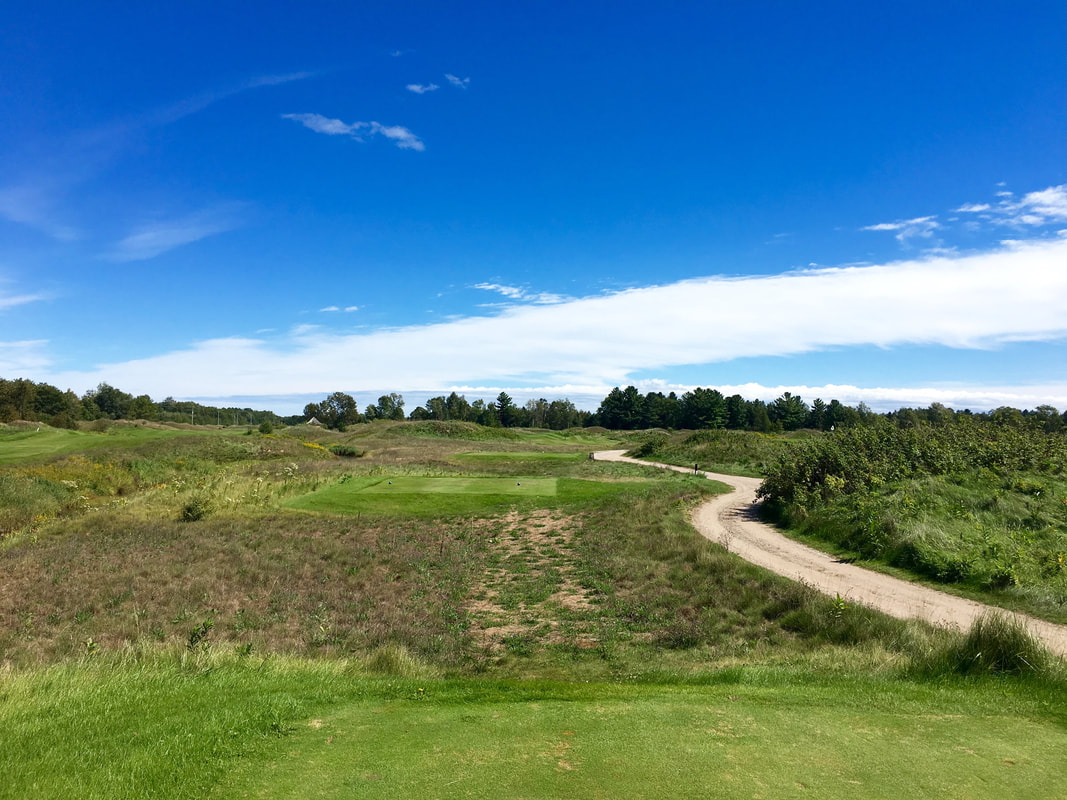
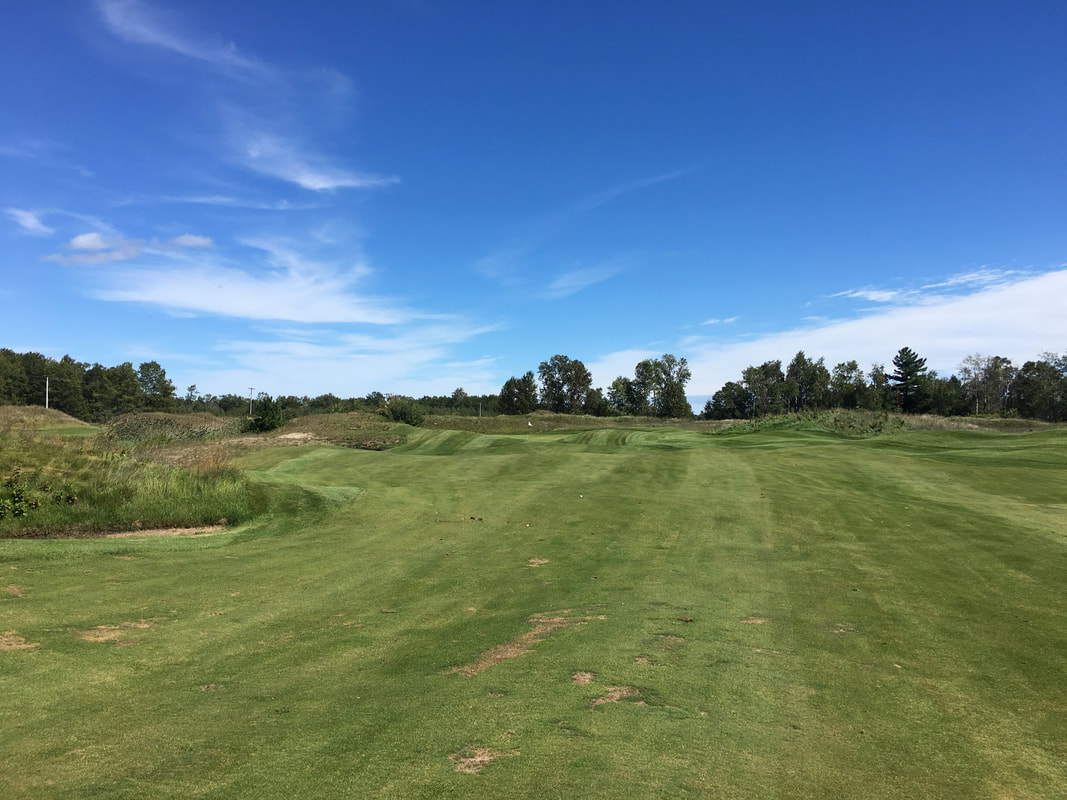
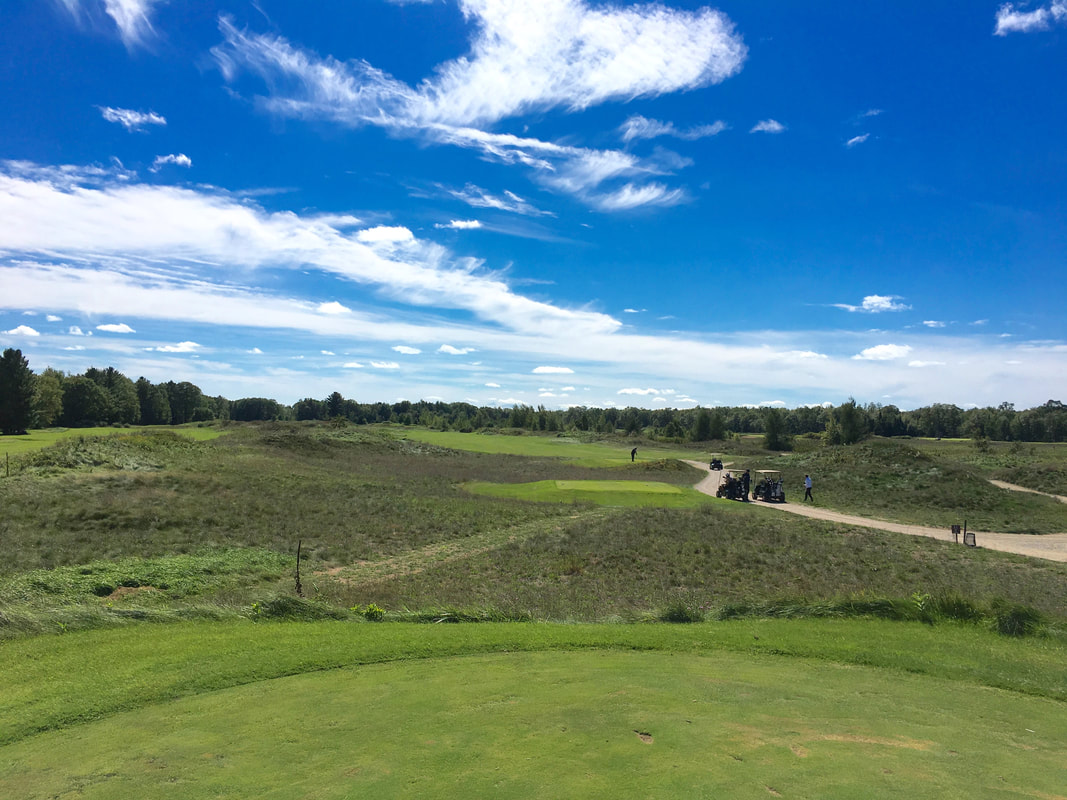
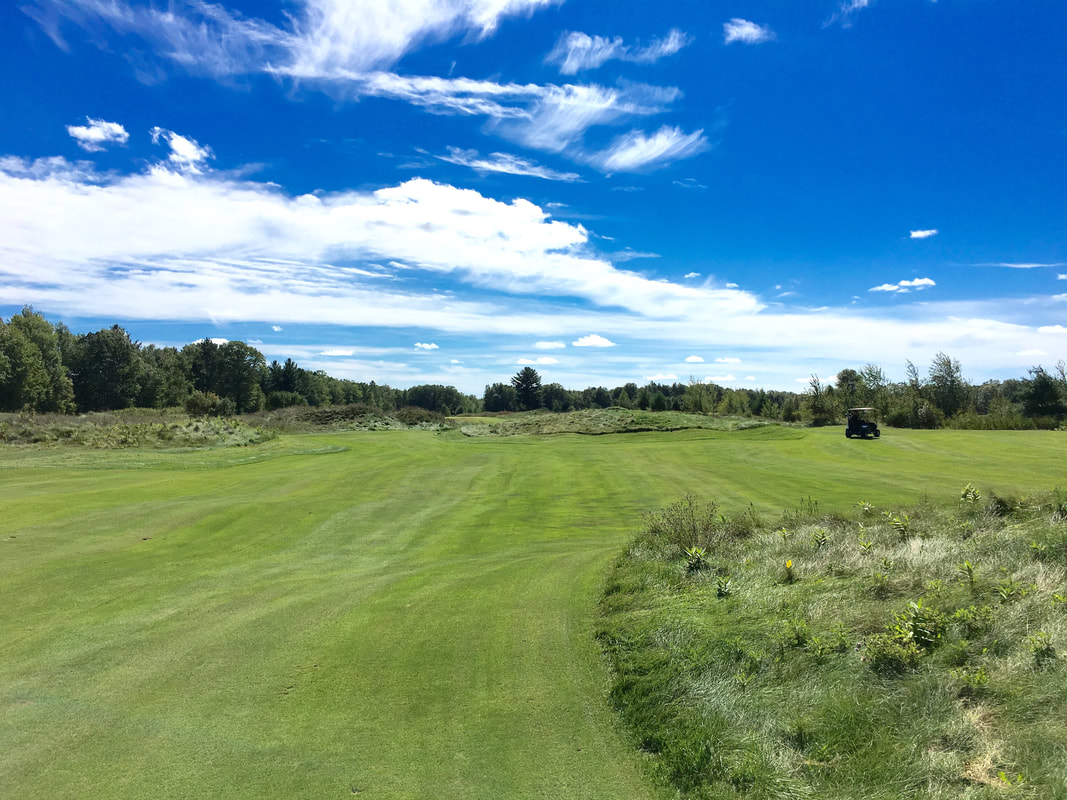
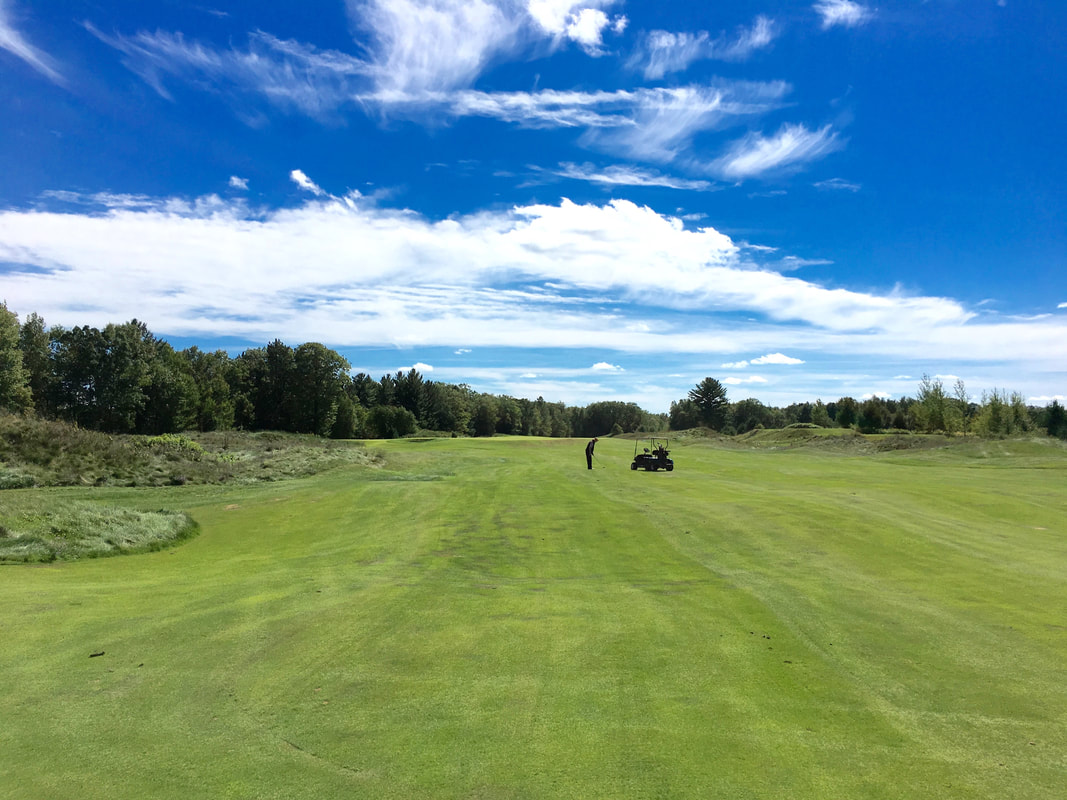
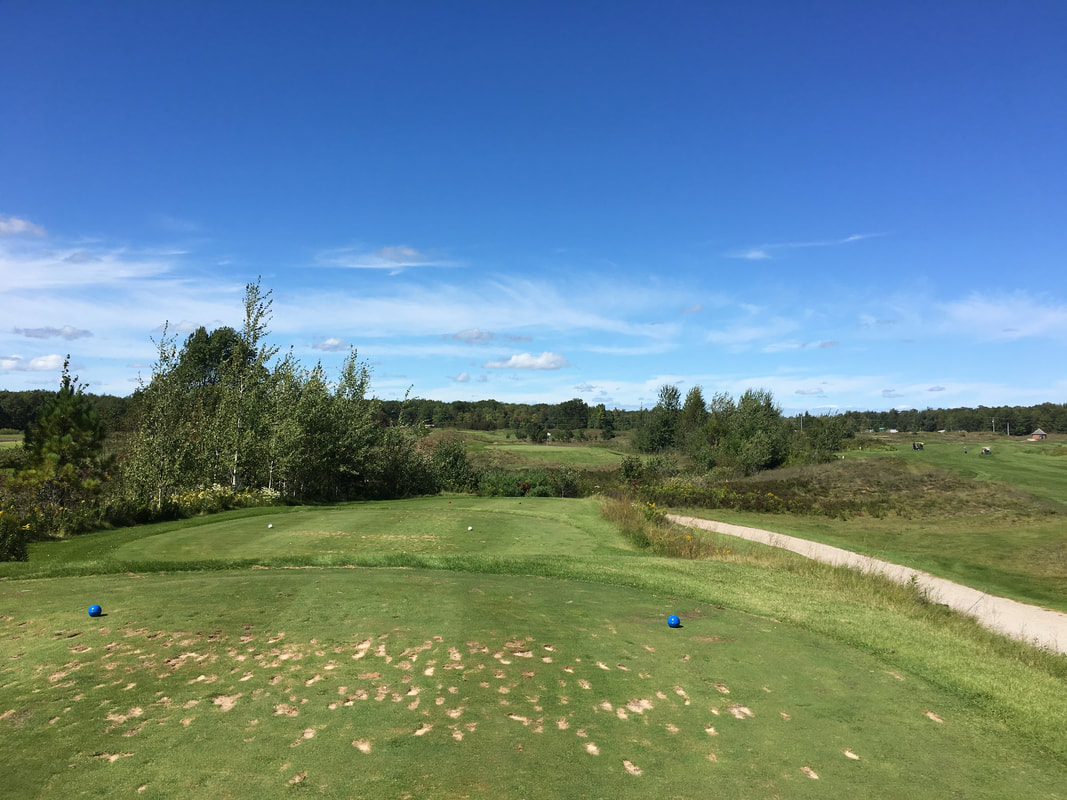
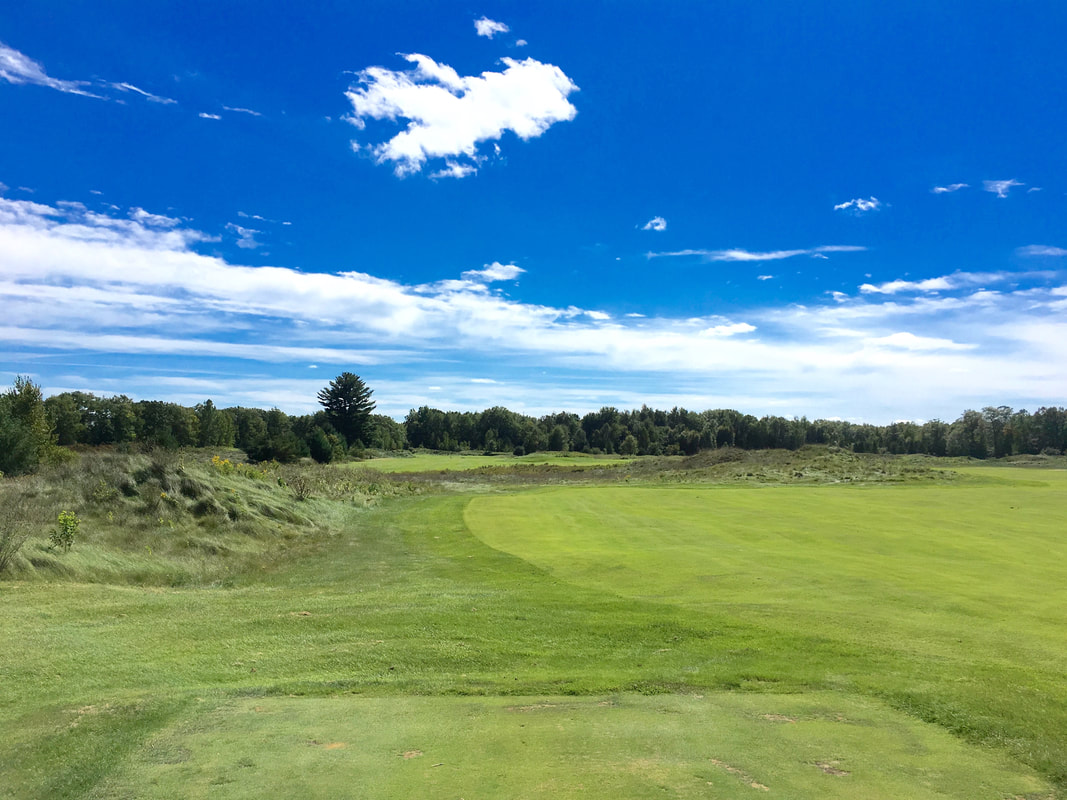
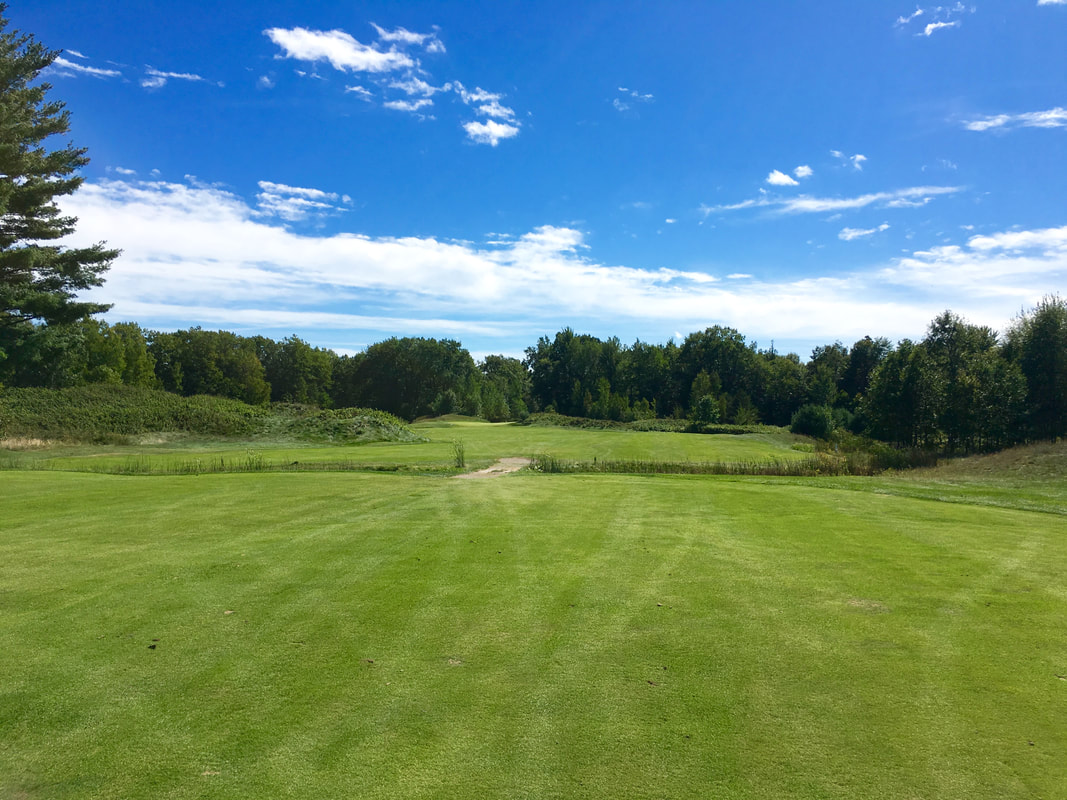

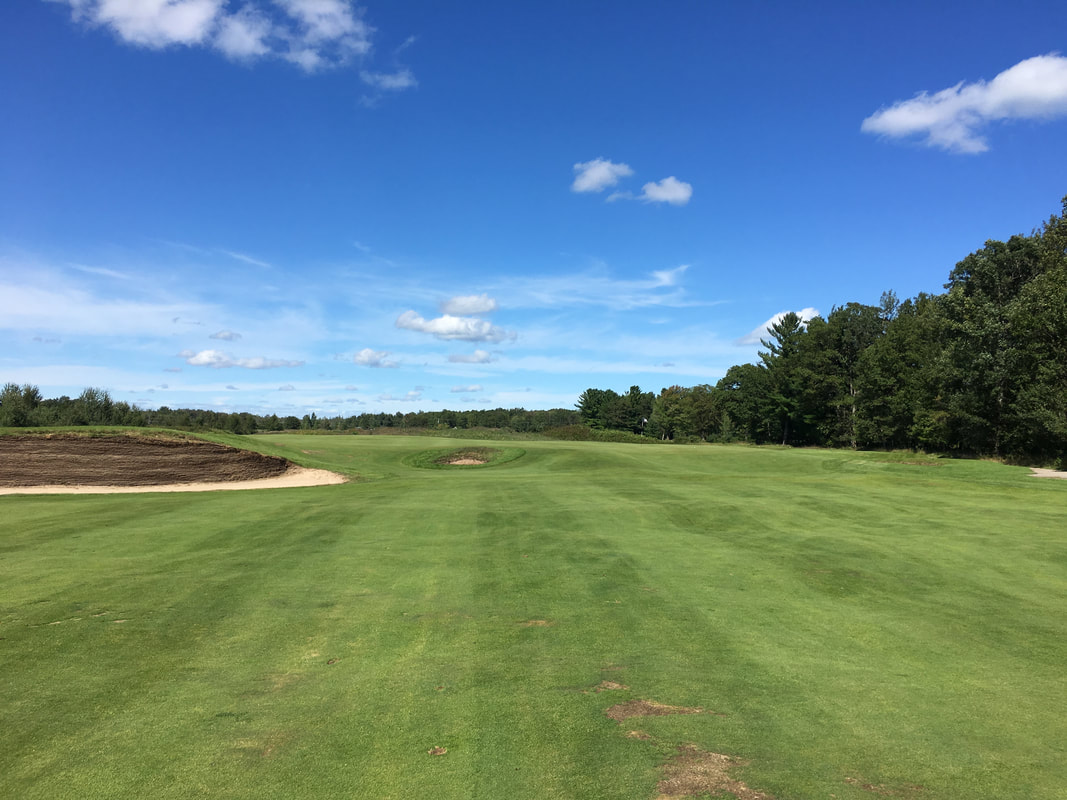
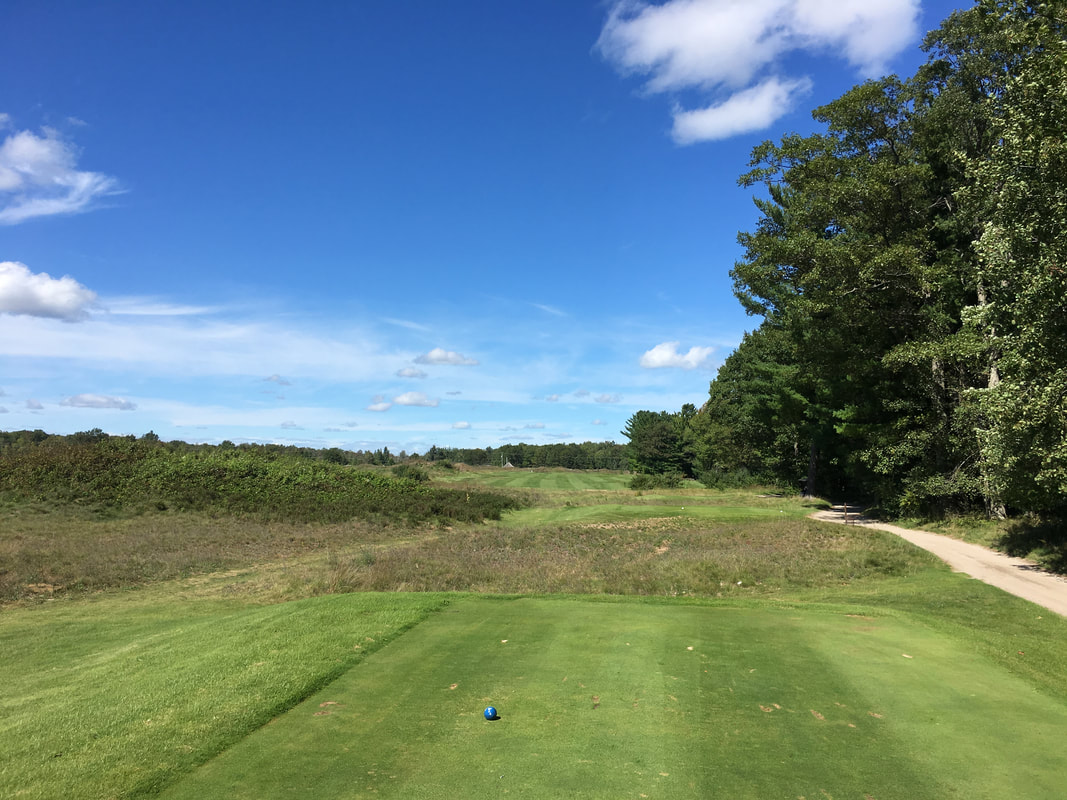
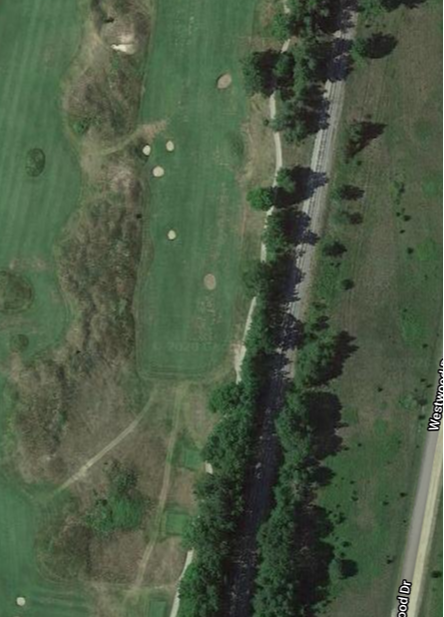
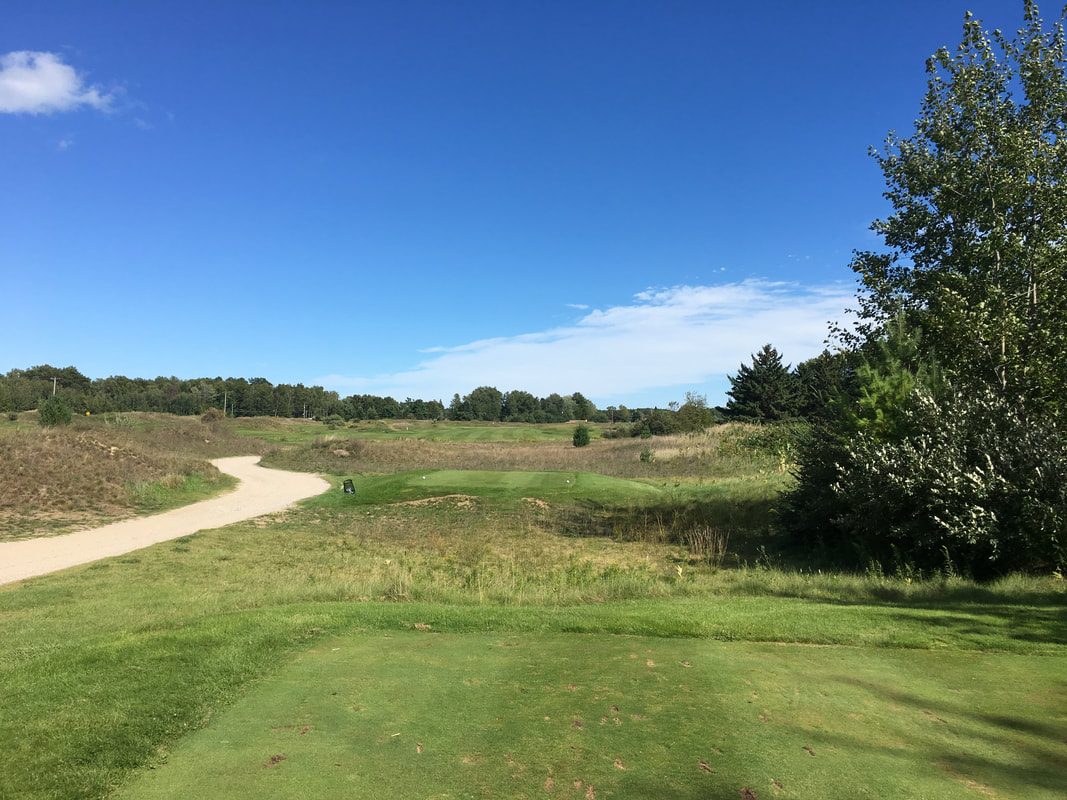
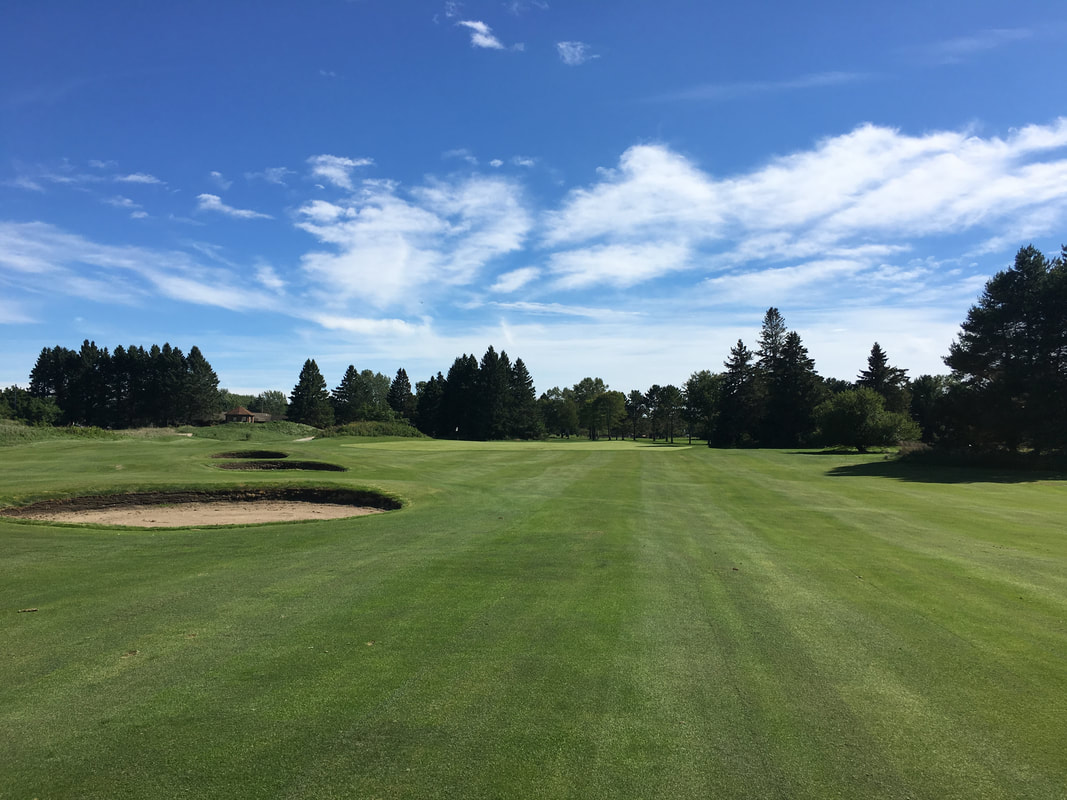
 RSS Feed
RSS Feed